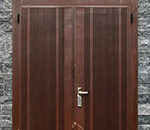There is something about doors and windows. Doors and windows tell us so much about the streets, about history, about culture—and they’re everywhere. Doors and windows are big, small, plain, colorful, old, new, modern, antique, they come in all shapes and forms. Sometimes you will find open doors and windows, sometimes closed, with or without people, and sometimes the door or the windows are gone, but you know where they used to be.
Doors and windows beg us to be opened. You’re supposed to open doors and walk through them. You’re supposed to open windows and let the breeze come through.
Doors and windows are full of patterns, textures, and designs. They call us to be photographed. They come in a variety of shapes, sizes, and materials. Some are huge, and some are intimidating. Some are small and just there. Some doors and windows are famous and some are art forms. These and more certainly bring the fascination of capturing images of doors and windows.
Capturing an image of a door or a window might seem like an easy task. What can be so difficult about it? They’re flat, so nothing to worry about when it comes to depth of field. They don’t move, so need to think too much about shutter speed. But wait, doors and windows too have their challenges.
Most of the time, doors and windows try to avoid the sun. They are patiently waiting under awnings, doorways, trees… oh, shadows. Sun might be hitting them, so there is reflection that you might not like or that you might want to take advantage of. Doors and windows in the shade tend to have a cool, low, blue tone, so sometimes the use of warming filters comes into place.
As with most photographs, early morning and late afternoon is the best time to shoot doors and windows, not only due to the warmth of the light but also because porches, awnings, and doorways are out of the light path, and no shadows are present. Side lighting is also interesting; it will enhance the texture of the door or the window as well as its details.
The use of a tripod is usually required to capture the details of doors and windows, since you will be shooting with a medium to slow shutter speed. Usually natural light is adequate, but if you are not using a tripod you might need a flash to fill in.
When you find a door or a window that you want to capture, remember your first impression, think about it, and review it. What was it that caught your attention? The color of the door or window? The overall scene? The wall surrounding it? The doorknob, the texture, the window drapes? Whatever it was, make sure you capture that details; without it the image might lose its magic.
Another important point to focus on is moving in close enough to remove all distractions and isolate your main focal point—the one that caught your attention. Watch the lighting and keep the back of your camera parallel to the door or window to keep everything sharp and in focus, maximizing the depth of field.
If what caught your attention was the texture, rusting, peeling paint, the carvings, then move in closer and consider using a macro lens. You really want to capture as much detail as possible. Side lighting can accentuate those details. Use the shadows to add depth to the texture; capture an image in two dimensions.
Doorknobs are interesting details to capture. Depth of field plays an important part in your image composition. If you want to capture the whole knob, use a smaller aperture so that everything is in focus. If you want to capture only the end of the knob and blur the back of it, then use a larger aperture. Think about other distracting elements involved in doorknobs, like keyholes and other highlights. Make sure you know what you want your image to look like.
After capturing what caught your attention, move back and study the rest of the door or window. Change your position, your angles, get down, get high, and look around. You might find that there is more to capture.
When capturing images of doors and windows, take your time. The door and the window aren’t going anywhere.
About the Author
This article was written by Joaquin Duenas. Website: http://www.theduenitas.com. PhotoBlog: http://theduenitas.blogspot.com. The Duenitas Digital World is based in Miami, Florida and covers South Florida, the Caribbean, Mexico, and Central America.
Like This Article?
Don't Miss The Next One!
Join over 100,000 photographers of all experience levels who receive our free photography tips and articles to stay current:









Leave a Reply